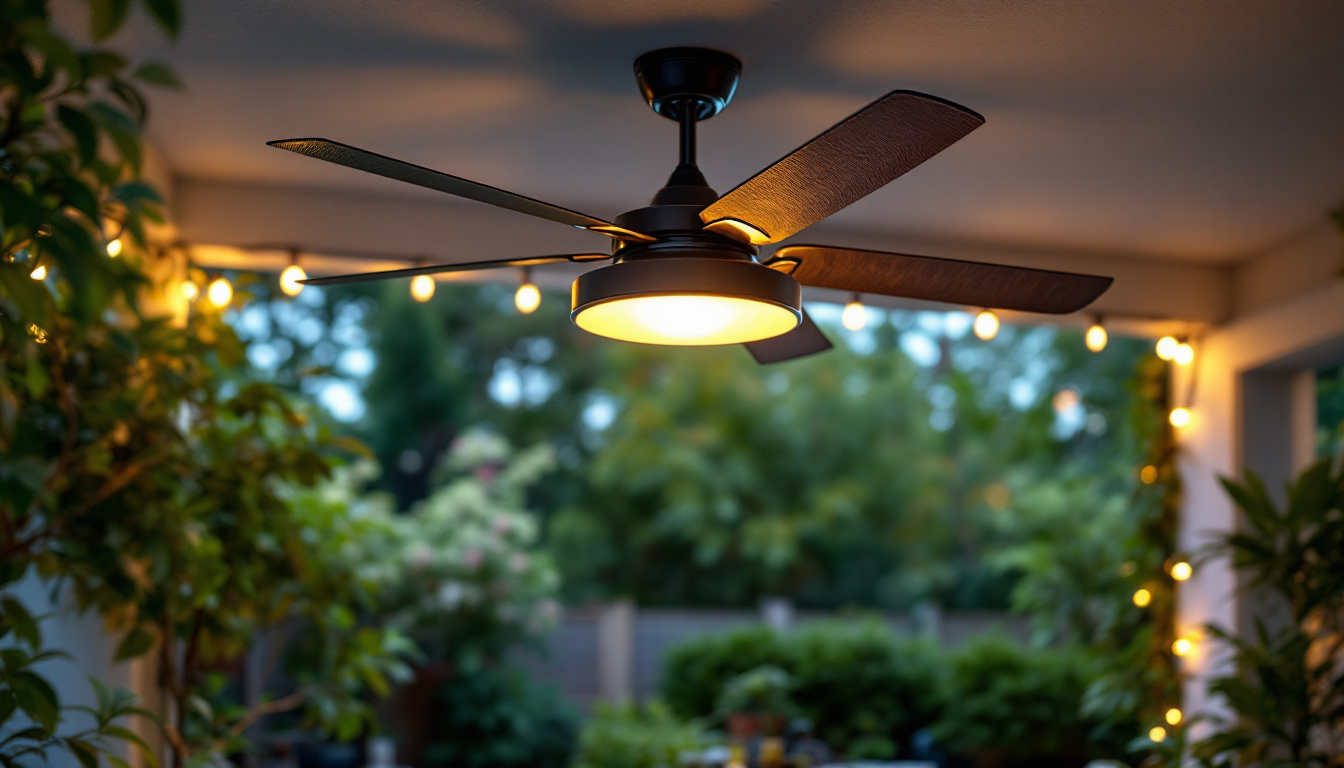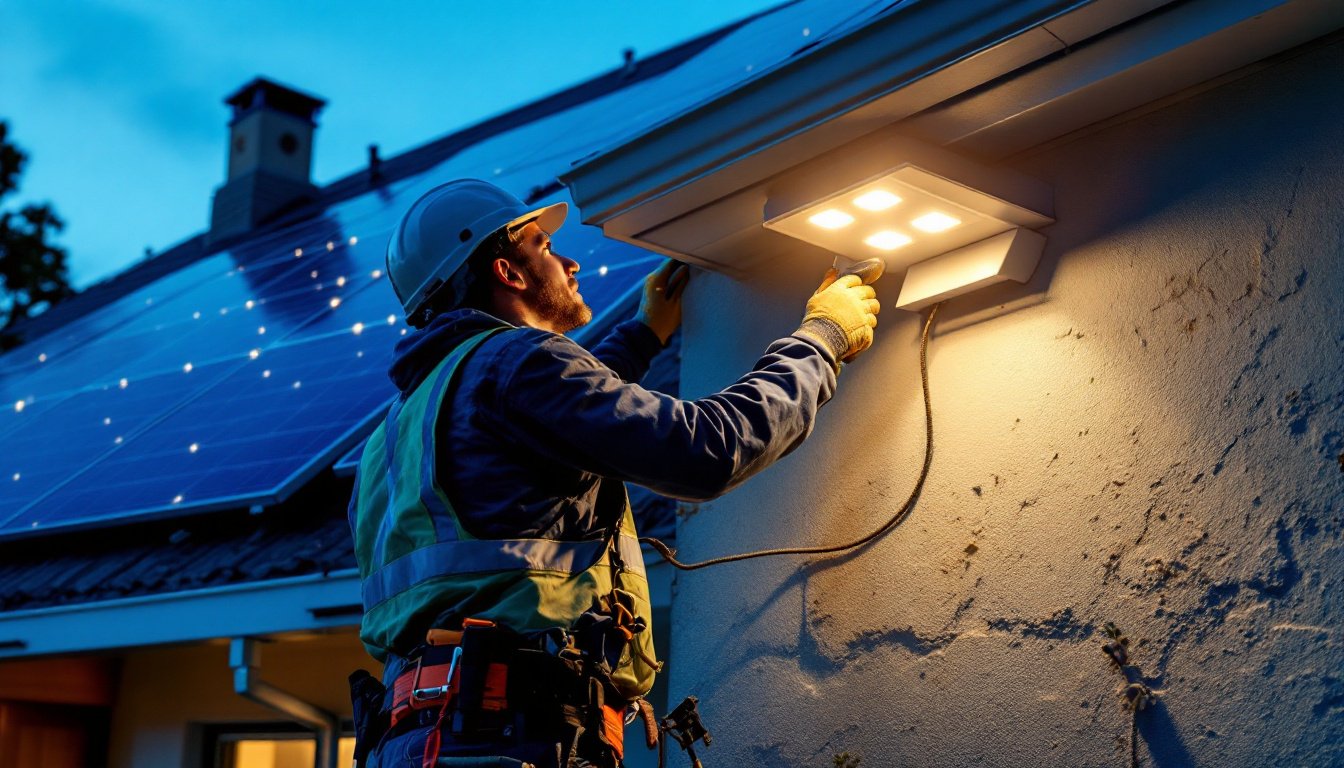

In the ever-evolving world of lighting technology, energy efficiency has become a top priority for contractors and consumers alike. One of the key components that plays a significant role in achieving energy-efficient lighting is the ballast. Understanding ballast light is essential for lighting contractors who wish to provide optimal solutions for their clients. This article delves into the intricacies of ballast light, its types, benefits, and its impact on energy efficiency.
Ballast light refers to the device used to regulate the current to fluorescent and HID (High-Intensity Discharge) lamps. It serves as a critical component in ensuring that the lamp operates efficiently and effectively. Without a ballast, these types of lamps would not function properly, leading to flickering or even complete failure. In addition to its primary function, the ballast also plays a role in protecting the lamp from electrical surges and fluctuations, which can be particularly beneficial in environments with unstable power supply.
Ballasts work by providing the necessary starting voltage to ignite the lamp and then regulate the current during operation. They can be either magnetic or electronic, with each type offering distinct advantages. Magnetic ballasts are the traditional option, known for their durability and simplicity. However, electronic ballasts have gained popularity due to their efficiency and ability to provide better light quality. The technology behind electronic ballasts allows for a more precise control of the electrical current, which not only enhances the brightness of the lamp but also reduces the hum often associated with magnetic ballasts. This makes electronic ballasts a preferred choice in settings where noise levels are a concern, such as offices and libraries.
Energy efficiency is a crucial consideration in today’s lighting designs. Ballasts contribute significantly to this aspect by minimizing energy consumption. Electronic ballasts, for instance, can reduce energy usage by up to 30% compared to their magnetic counterparts. This reduction not only lowers electricity bills but also extends the lifespan of the lamps, resulting in fewer replacements and reduced waste. Furthermore, the adoption of energy-efficient ballasts aligns with global sustainability goals, as it helps decrease the overall carbon footprint associated with lighting. Many governments and organizations are now incentivizing the use of energy-efficient lighting solutions, which can include rebates or tax credits for businesses that upgrade their systems. This not only benefits the environment but also encourages a shift towards more sustainable practices in commercial and residential settings.
There are primarily two types of ballasts: magnetic and electronic. Each type has its unique characteristics, advantages, and applications. Understanding these differences is essential for lighting contractors when selecting the appropriate ballast for specific projects.
Magnetic ballasts have been around for decades and are characterized by their heavy, robust construction. They operate using electromagnetic induction to control the current flowing to the lamp. While they are reliable and long-lasting, magnetic ballasts tend to be less energy-efficient than their electronic counterparts. They also produce more heat and can result in flickering lights, especially in colder temperatures. One of the key advantages of magnetic ballasts is their durability; they can withstand harsh environmental conditions, making them suitable for outdoor applications or industrial settings where reliability is paramount. However, their bulkiness and weight can pose installation challenges, especially in tight spaces.
Electronic ballasts represent a more modern approach to ballast technology. They utilize electronic circuits to control the current and voltage supplied to the lamp. This results in a more stable light output and significantly reduces energy consumption. Additionally, electronic ballasts are lighter, quieter, and can operate at a higher frequency, which enhances the overall quality of light produced. Their compact design allows for easier installation and integration into various lighting fixtures, making them a popular choice for commercial and residential applications alike. Furthermore, many electronic ballasts are designed to be compatible with dimming systems, providing flexibility in lighting control and energy savings. As the demand for energy-efficient solutions grows, electronic ballasts are becoming increasingly favored for their ability to reduce operational costs and environmental impact.
The benefits of incorporating ballast light into lighting designs extend beyond energy efficiency. They encompass a range of advantages that can enhance the performance and sustainability of lighting systems.
One of the most significant benefits of using ballast light is the potential for enhanced energy savings. By selecting the right ballast, contractors can help clients reduce their energy consumption, leading to lower utility bills. This is particularly important for commercial spaces where lighting can account for a substantial portion of energy costs. Additionally, the integration of smart technology with ballast systems allows for further optimization of energy use. For instance, occupancy sensors and timers can be paired with ballasts to ensure that lights are only active when needed, thereby maximizing savings and minimizing waste.
Ballast light contributes to improved light quality, which is essential for creating comfortable and productive environments. Electronic ballasts, in particular, provide a flicker-free light that enhances visibility and reduces eye strain. This is especially beneficial in workplaces and educational settings where proper lighting is crucial for performance. Furthermore, the color rendering index (CRI) of the light produced by ballasts can significantly impact the ambiance of a space. Higher CRI ratings mean that colors appear more vibrant and true to life, which can enhance the aesthetic appeal of retail environments or art galleries, making them more inviting and engaging for customers and visitors alike.
Using the appropriate ballast can significantly extend the lifespan of lamps. By regulating the current and voltage, ballasts prevent overheating and ensure that lamps operate within their optimal parameters. This not only reduces the frequency of lamp replacements but also minimizes waste, contributing to more sustainable practices in lighting design. Moreover, the longevity of lamps translates to reduced maintenance costs over time, as facilities can allocate fewer resources to lamp replacement and repairs. This is particularly advantageous for large installations, such as in industrial or municipal settings, where maintenance can be labor-intensive and costly. The durability of ballast systems also means that they can withstand varying environmental conditions, making them suitable for both indoor and outdoor applications.
Selecting the right ballast for a specific application requires careful consideration of various factors. Lighting contractors must assess the needs of the project and the preferences of their clients to make informed decisions.
It is crucial to ensure that the ballast is compatible with the type of lamp being used. Different lamps require specific ballasts to function correctly. For instance, fluorescent lamps typically require either a magnetic or electronic ballast, while HID lamps may need a specific type of ballast designed for high-intensity discharge applications.
When choosing a ballast, contractors should also consider energy efficiency ratings. Look for ballasts that meet or exceed the standards set by organizations such as the Department of Energy (DOE) and the Environmental Protection Agency (EPA). These ratings can provide insight into the ballast’s performance and potential energy savings.
Different applications may require specific features in a ballast. For example, some electronic ballasts come with dimming capabilities, allowing for adjustable light levels. Others may have built-in sensors for occupancy or daylight harvesting, further enhancing energy efficiency. Understanding the unique needs of each project can guide contractors in selecting the most appropriate ballast.
Proper installation of ballast light is essential for achieving optimal performance and energy efficiency. Lighting contractors must adhere to best practices during the installation process to ensure that the system operates as intended.
Correct wiring and connections are critical when installing ballasts. Contractors should follow the manufacturer’s instructions carefully and ensure that all connections are secure. Loose or incorrect connections can lead to flickering lights, reduced efficiency, and even damage to the ballast or lamp.
Ballasts generate heat during operation, making proper placement and ventilation vital. Contractors should install ballasts in locations that allow for adequate airflow to prevent overheating. This is particularly important in enclosed fixtures where heat build-up can adversely affect performance and lifespan.
The lighting industry is continuously evolving, and ballast technology is no exception. Emerging trends are shaping the future of ballast light, presenting new opportunities for contractors and their clients.
One of the most exciting developments in ballast technology is the rise of smart ballasts. These devices are equipped with advanced features such as wireless connectivity and integration with building management systems. Smart ballasts can provide real-time data on energy usage, enabling contractors and building managers to make informed decisions about lighting performance and efficiency.
As LED technology becomes increasingly prevalent, the integration of ballasts with LED systems is gaining traction. While traditional ballasts are not compatible with LED lamps, new driver technologies are emerging that provide similar functionalities. These advancements allow for more energy-efficient lighting solutions while maintaining the benefits of ballast regulation.
In summary, understanding ballast light is essential for lighting contractors aiming to provide energy-efficient solutions to their clients. By grasping the different types of ballasts, their benefits, and installation considerations, contractors can make informed decisions that enhance the performance and sustainability of lighting systems. As technology continues to evolve, staying abreast of trends such as smart ballasts and LED integration will further empower contractors to lead the way in energy-efficient lighting design.
Ready to enhance your lighting projects with the most energy-efficient ballast options? Look no further than LumenWholesale, where we provide contractors with the highest quality, spec-grade lighting products at unbeatable wholesale prices. Our extensive selection is designed to meet the highest industry standards, ensuring that you have access to reliable and high-performance lighting solutions for every project. Plus, with free shipping on bulk orders, you can secure premium lighting at the best value — all without hidden fees or compromises. Elevate your lighting designs today and experience the perfect blend of quality, affordability, and convenience. Visit LumenWholesale for Wholesale Lighting at the Best Value.

Discover the top benefits of metal outdoor ceiling fans for lighting contractors.

Discover the innovative strategies lighting contractors are using to integrate LED and solar technologies.

Discover the transformative advantages of smart switches for lighting contractors.

Discover why purchasing architectural square linear lights in bulk from local distributors might not be the best choice.
Get notified when NEW deals are released.
Optimize your budget with wholesale discounts.
Only top-quality, specification-grade lighting products.
No additional costs at checkout - what you see is what you pay.
We understand the unique needs of contractors.